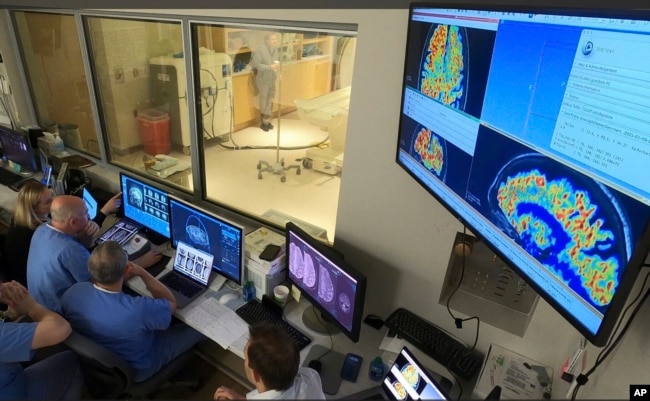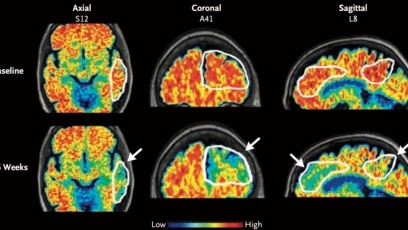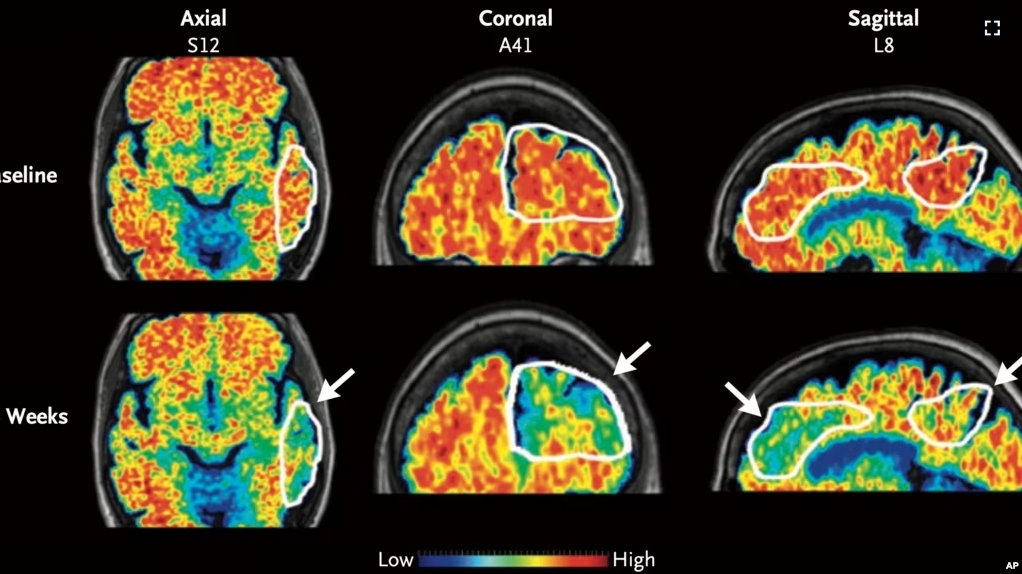Researchers recently said a new tool that uses what is called focused ultrasound can help deliver important medicine to the brains of Alzheimer’s patients.
Alzheimer’s is a disease that slowly reduces the brain function of patients, causing confusion and other problems. The new delivery method helps drugs remove the brain-clogging plaque the disease is known for.
The small sound waves created by the ultrasound tool create openings in what is called the blood-brain barrier. It is the protective lining in blood vessels that prevents bacteria and other damaging substances from getting into the brain.
However, the barrier also prevents Alzheimer’s medication from getting into the brain.
The new technique permits the medicine to get into the brain more easily and remove the plaque faster. So far, the tool has been used on only three patients. Each patient saw a faster removal of plaque than with a traditional treatment.
Dr. Ali Rezai of West Virginia University’s Rockefeller Neuroscience Institute led the study. “Our goal is to give patients a head start,” he said.

Some of the new Alzheimer’s treatments take a long time to work, he explained. But with the ultrasound tool, the drugs move into the brain faster.
The medicine delivery requires three steps. First, doctors inject tiny bubbles into the bloodstream. Then patients put on a special head covering that permits doctors to send sound waves to an exact area of the brain. The waves vibrate the bubbles which loosen the blood-brain barrier just enough for the drug to get in.
Before Rezai’s study, other researchers discovered the ultrasound technique was able to make small openings in the barrier. The openings closed up after 48 hours. Rezai’s experiment showed that the technique could be used to deliver medicine.
Many of the recently approved Alzheimer’s treatments take a long time to work. Patients must come for injections every few weeks for 18 months. The new treatment offers hope that patients can get results faster.
“Why not try to clear the plaques within a few months,” Rezai asked when discussing the reason behind his study.
His team gave three patients a dose of the drug Aduhelm each month for six months. Right after each injection, his team aimed the focused ultrasound at part of the brain known to have the plaque build-up. As a result, more of the day’s dose of the drug got through the blood-brain barrier.

The team scanned the patients’ brains before and after the treatment. After six months, scans showed a 32 percent reduction in plaque in the areas that were targeted, compared to areas that were not targeted.
Dr. Eliezer Masliah of the National Institute on Aging was not involved in the research. Masliah said the trial brings some hope for Alzheimer’s patients. However, he advised that larger trials are needed.
“It’s very exciting … data,” he said. “It opens the door for more extensive, larger studies.”
Masliah warned that one concern that must be investigated is whether the faster delivery of the drug will create side effects such as swelling and brain bleeding.
Rezai said he is about to start a new study using another Alzheimer’s drug called Leqembi. He added that larger studies would be needed to see if combining focused ultrasound with Alzheimer’s drugs makes a real difference for patients.
Other researchers may start studying whether the technique works for the treatment of other diseases that affect the brain, such as cancer.
I’m Dan Friedell.
Dan Friedell adapted this story for Learning English based on a report by the Associated Press.
__________________________________________
Quiz – Alzheimer’s Drugs May Reach Brain Faster with Ultrasound Tool

Start the Quiz to find out
____________________________
Words in This Story
focus –v. concentrating or targeting a specific location, paying extra attention to something
ultrasound –n. a kind of medical procedure that creates an image of the body using sound waves
clogging –adj. a description of an area, such as a tunnel or an artery, where water or fluid such as blood, cannot move freely because of a blockage
plaque –n. a sticky substance that can build up on teeth or in brain tissue
bubble –n. a small, air or gas-filled sac inside a liquid
vibrate –v. to move back and forth with quick movements
dose –n. an amount of medicine or a drug given by a doctor to treat a medical problem
scan –v. to look at something carefully, often with a medical imaging device
